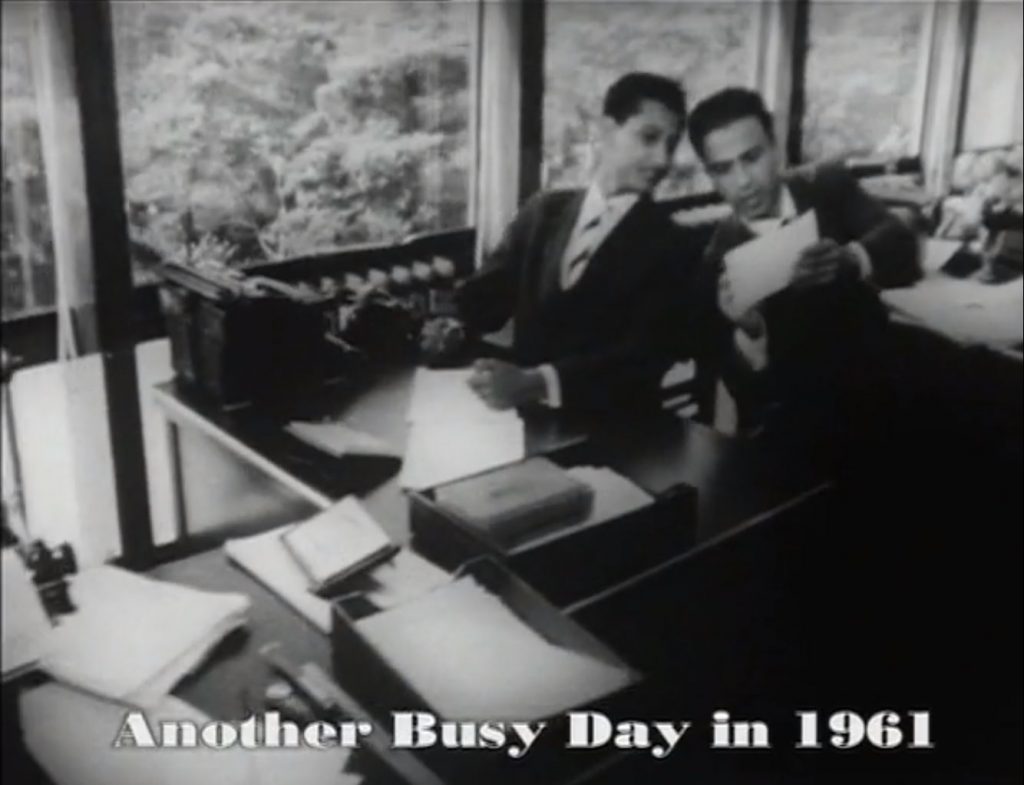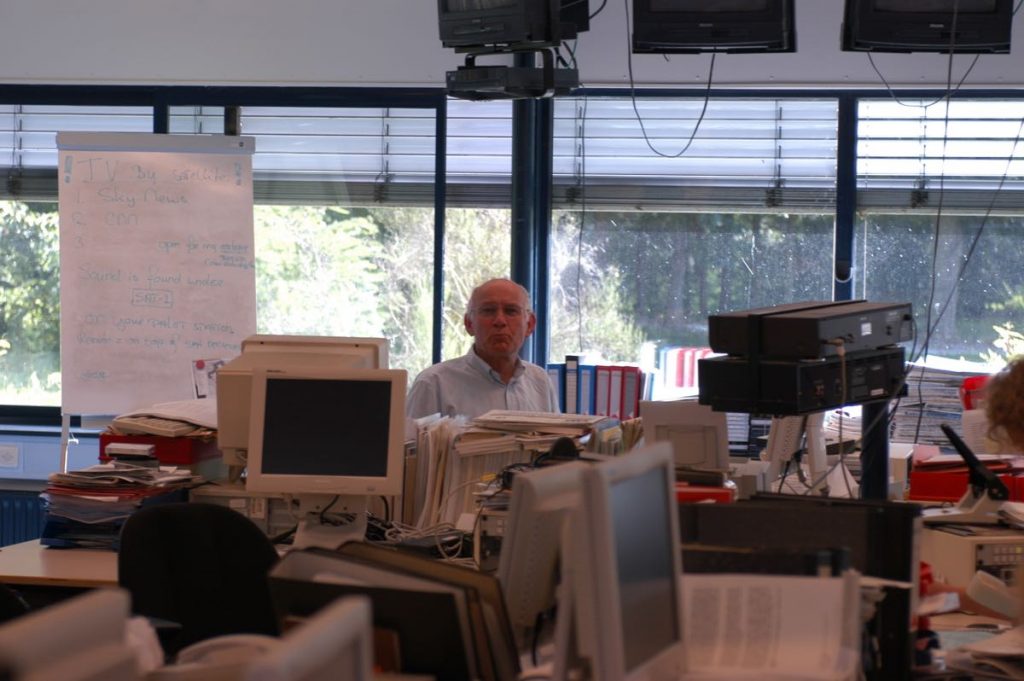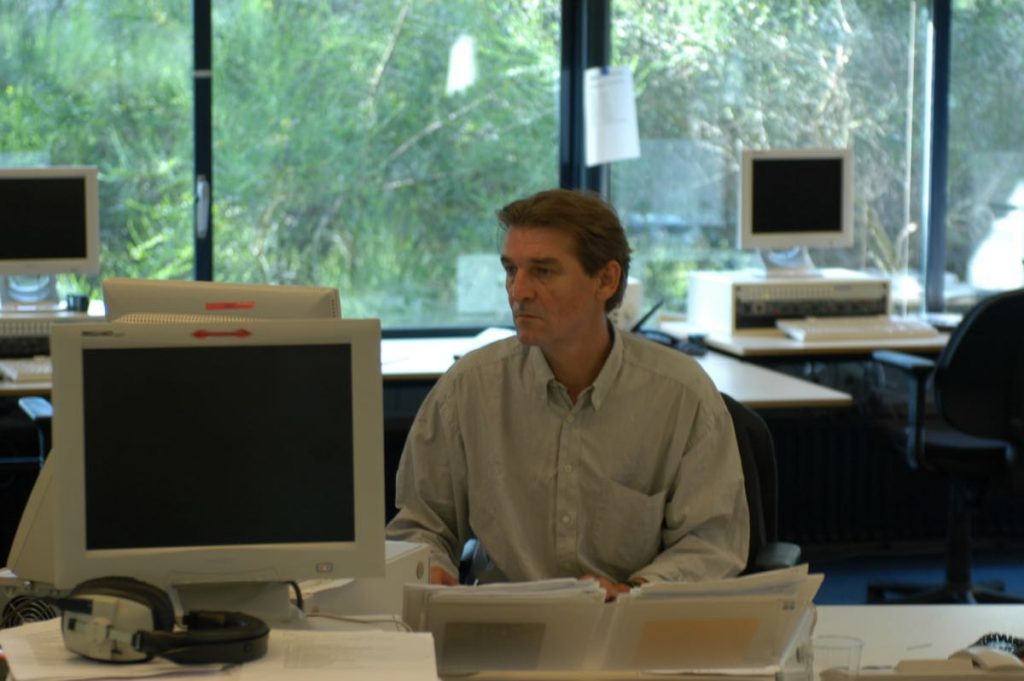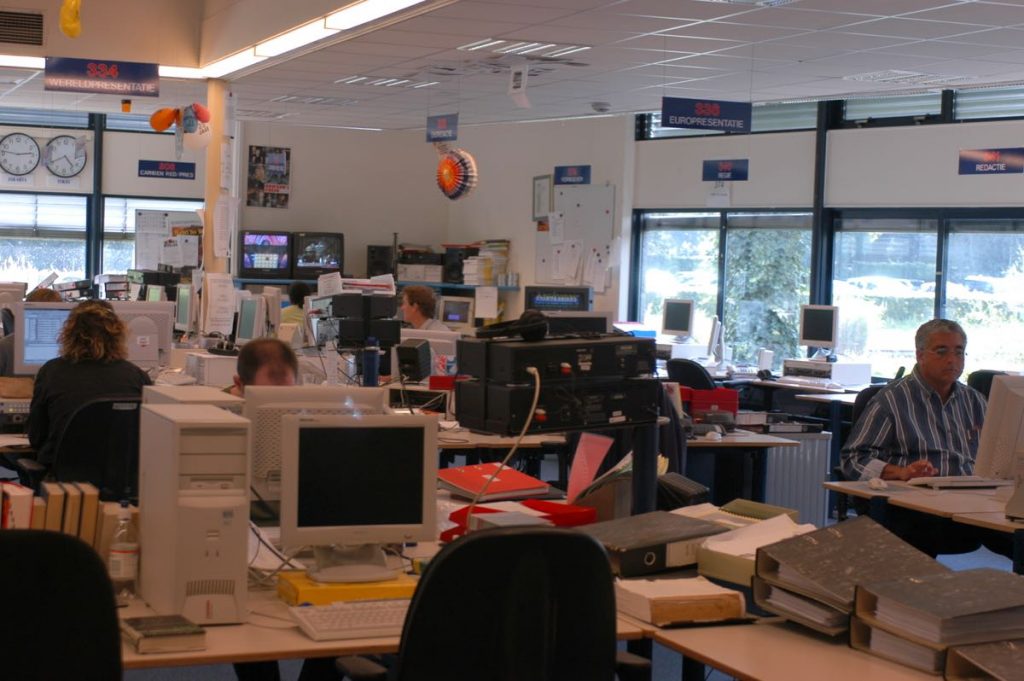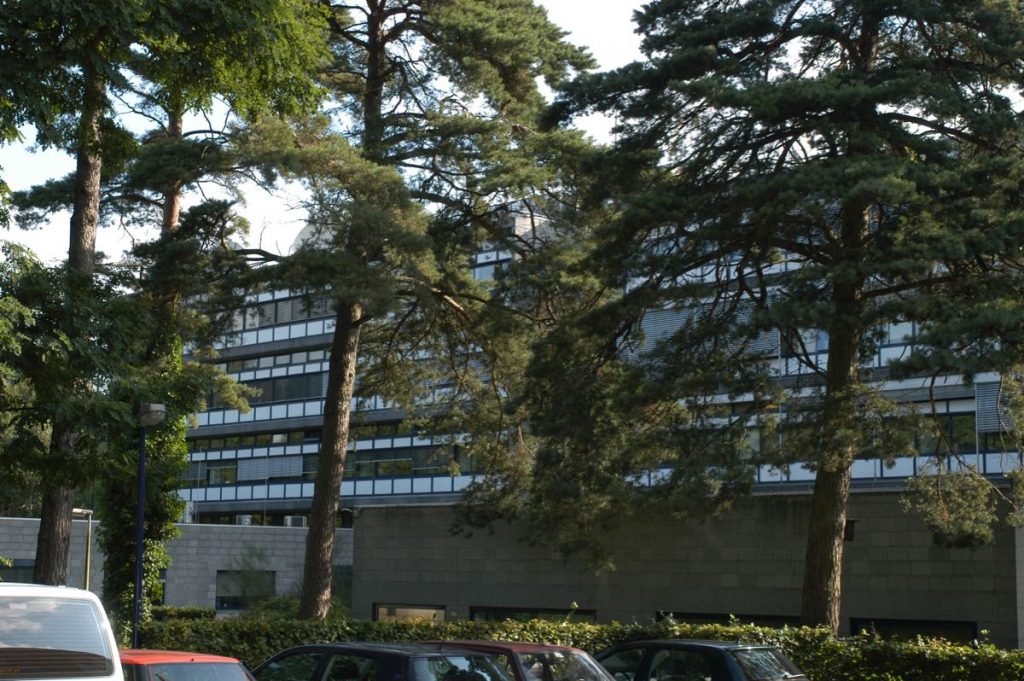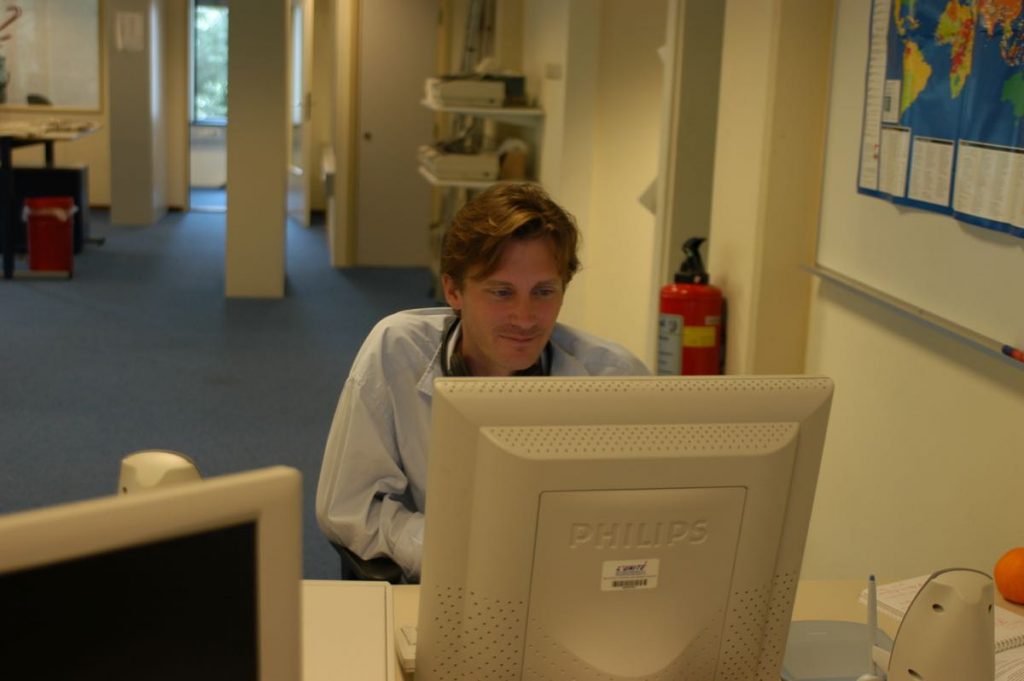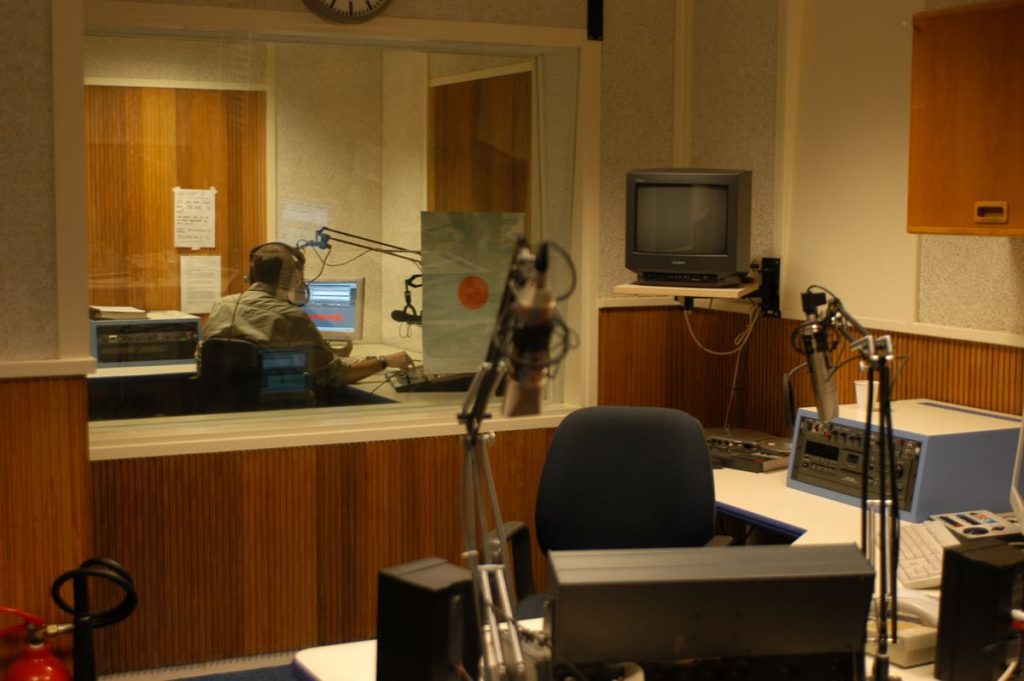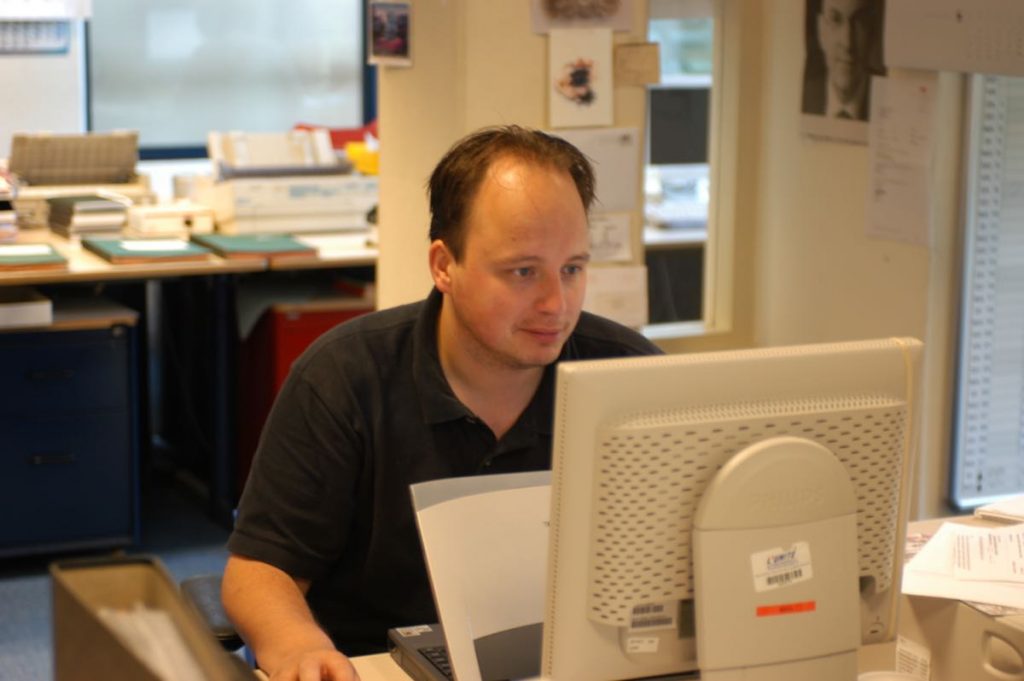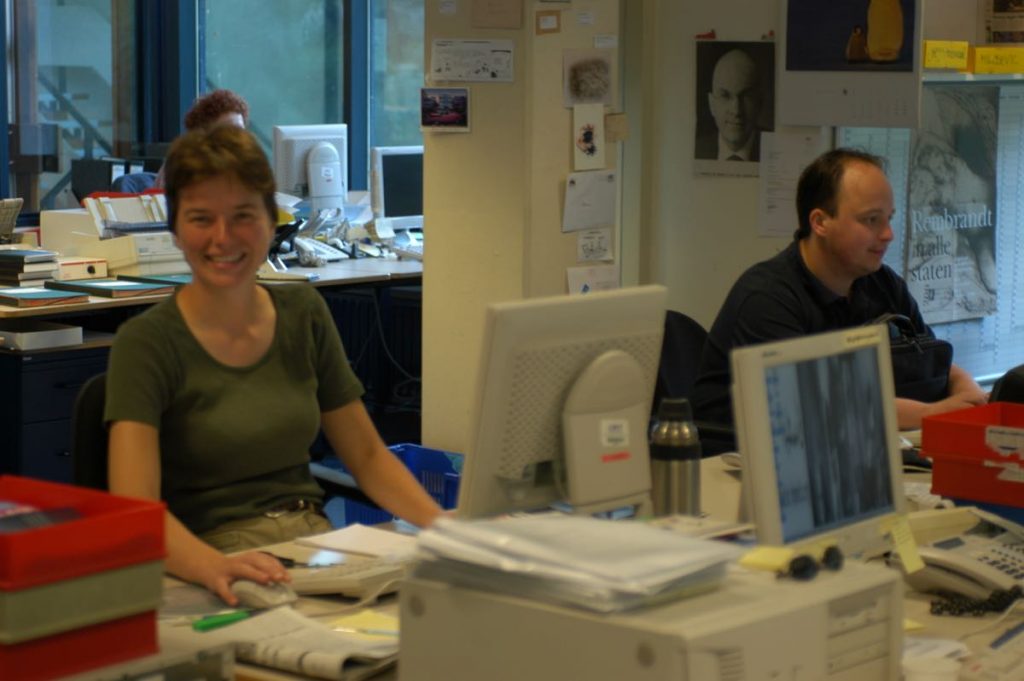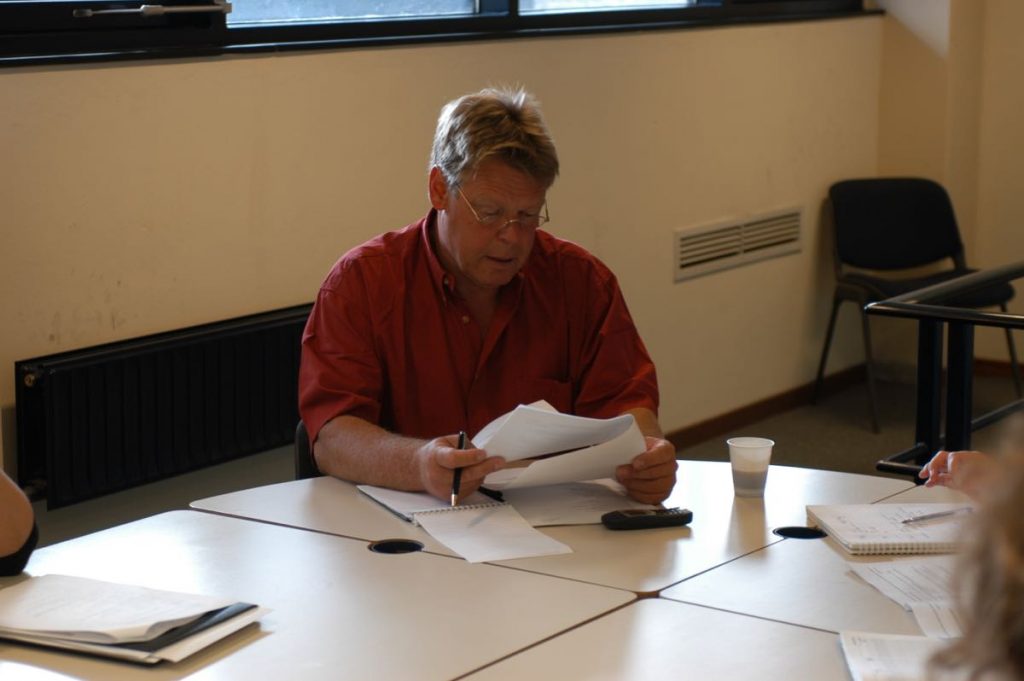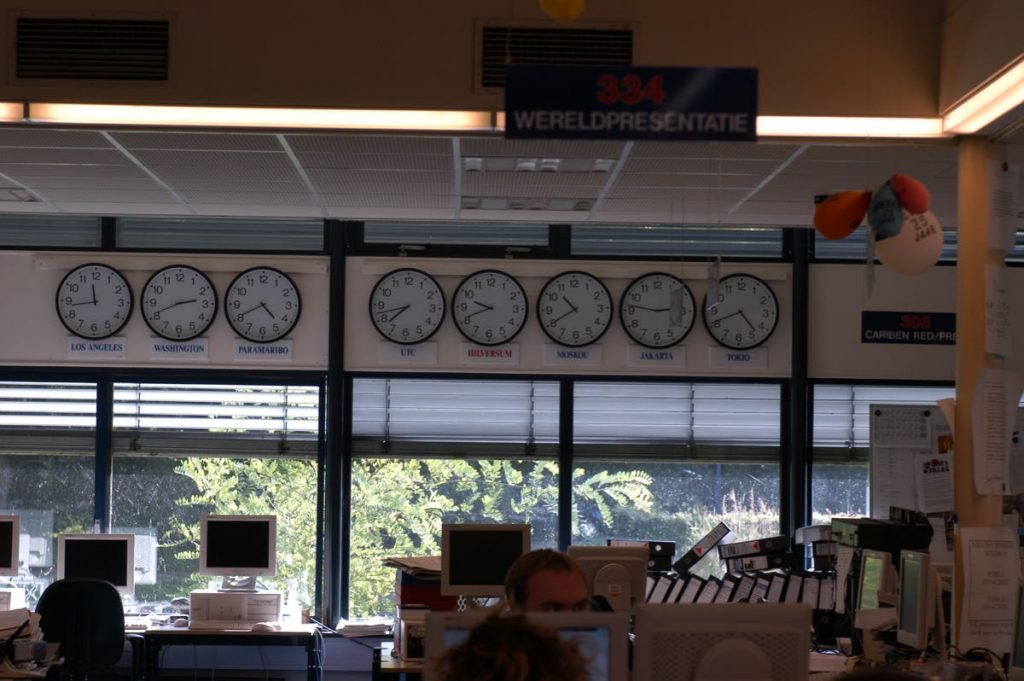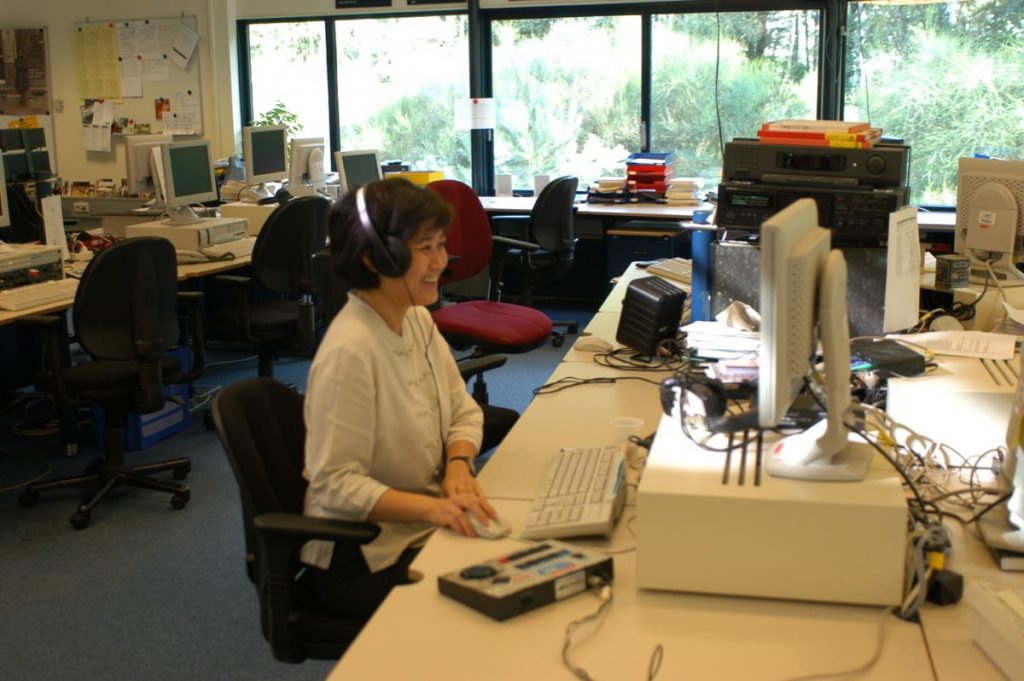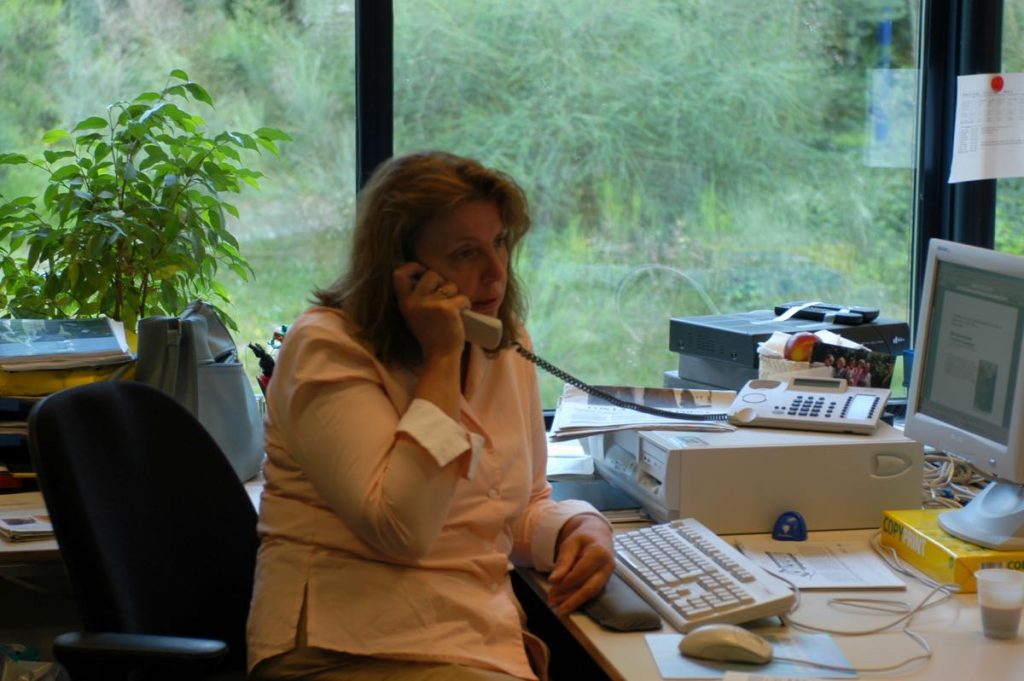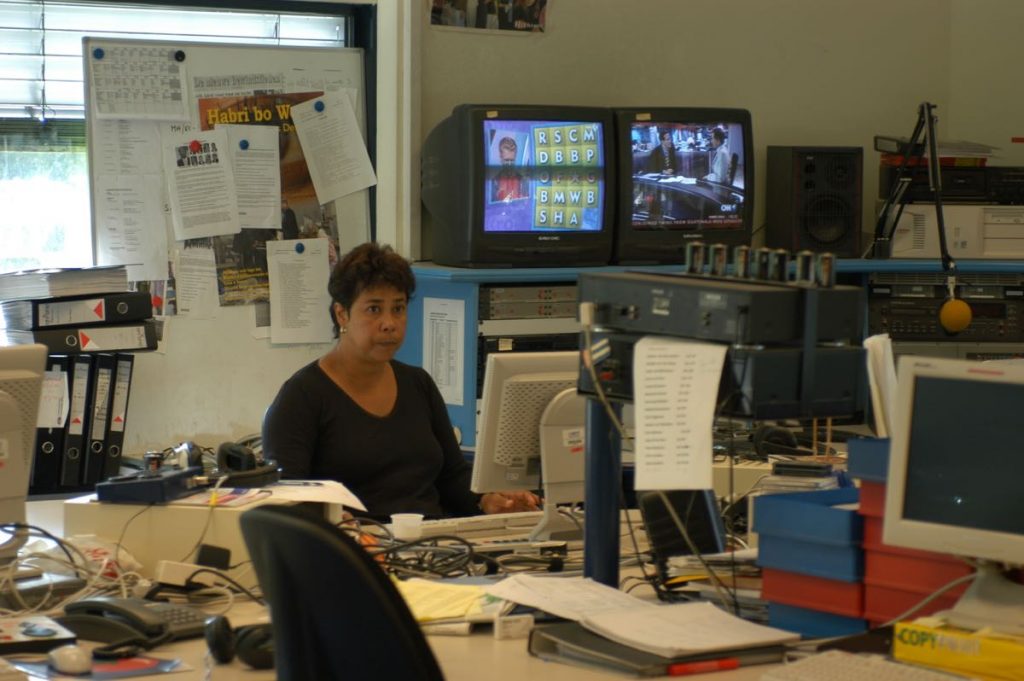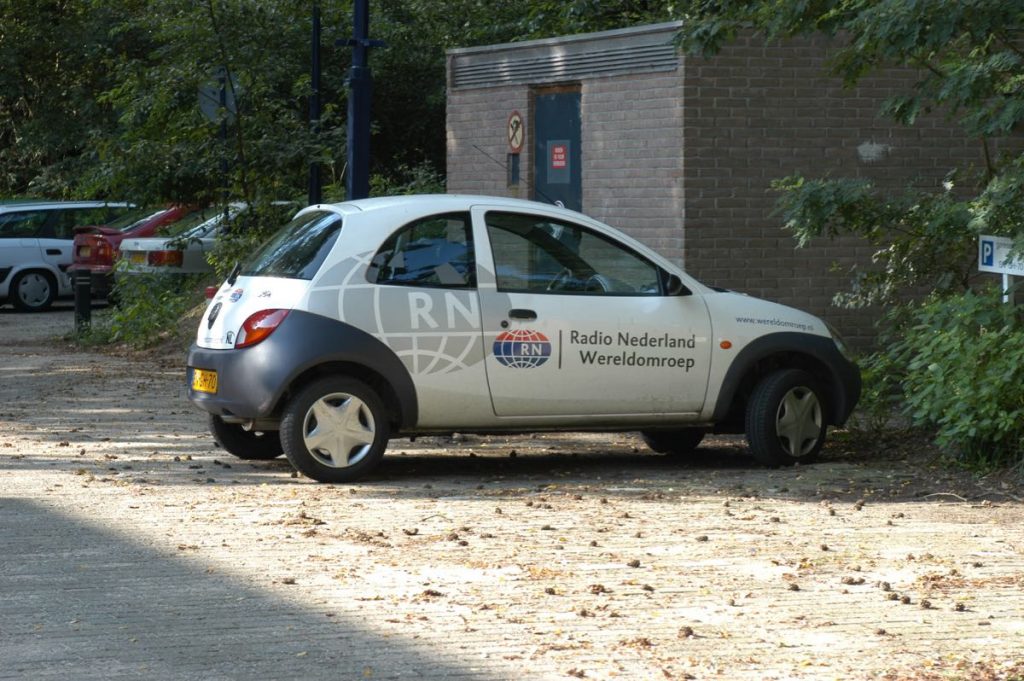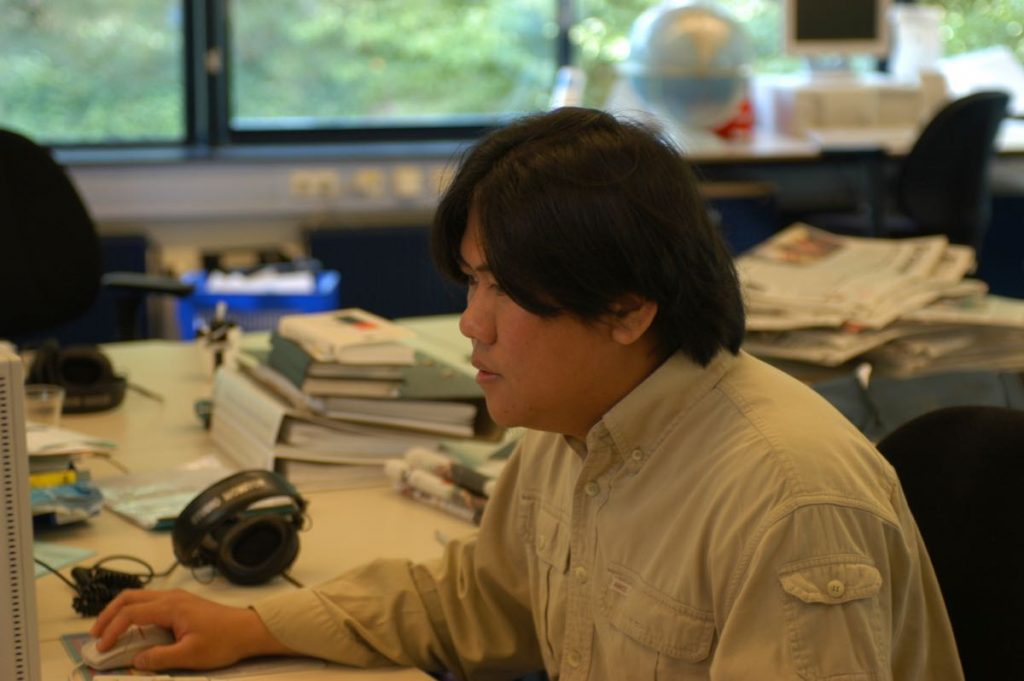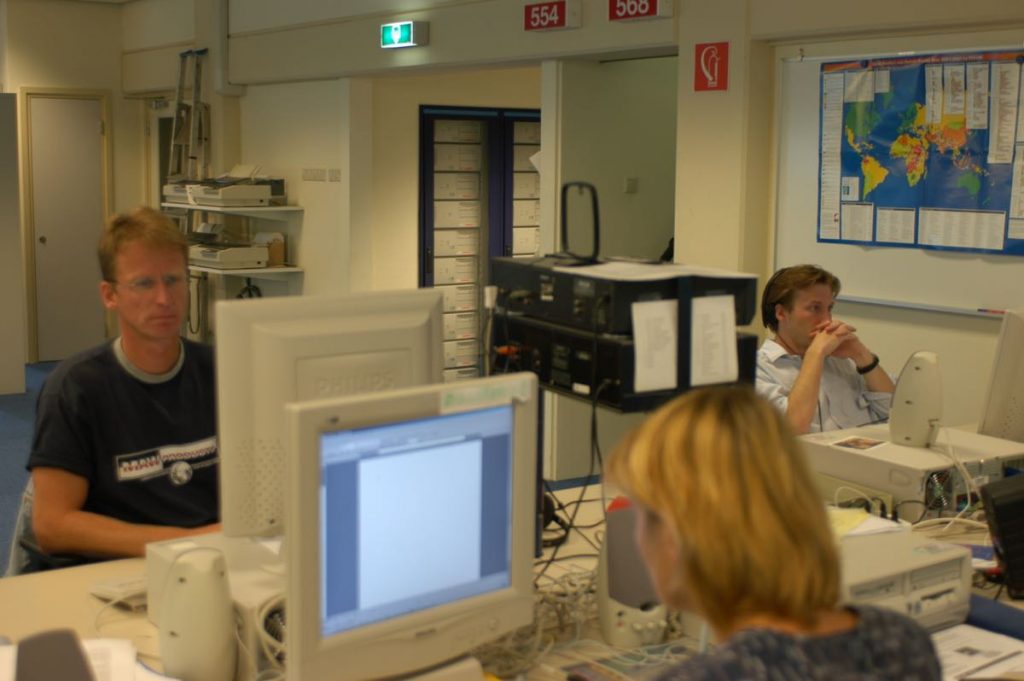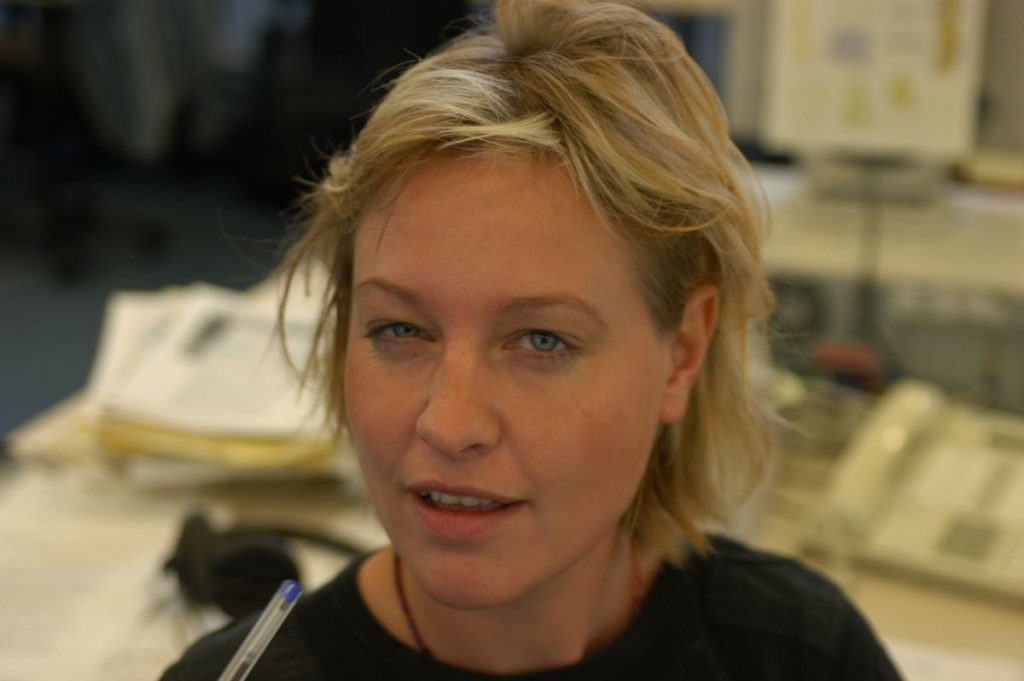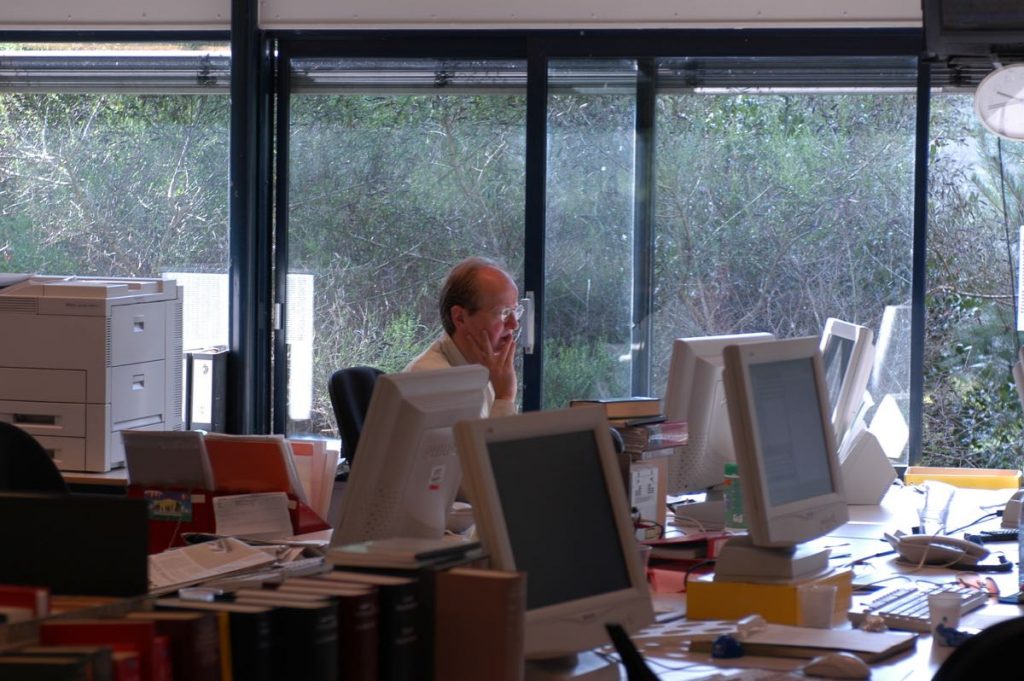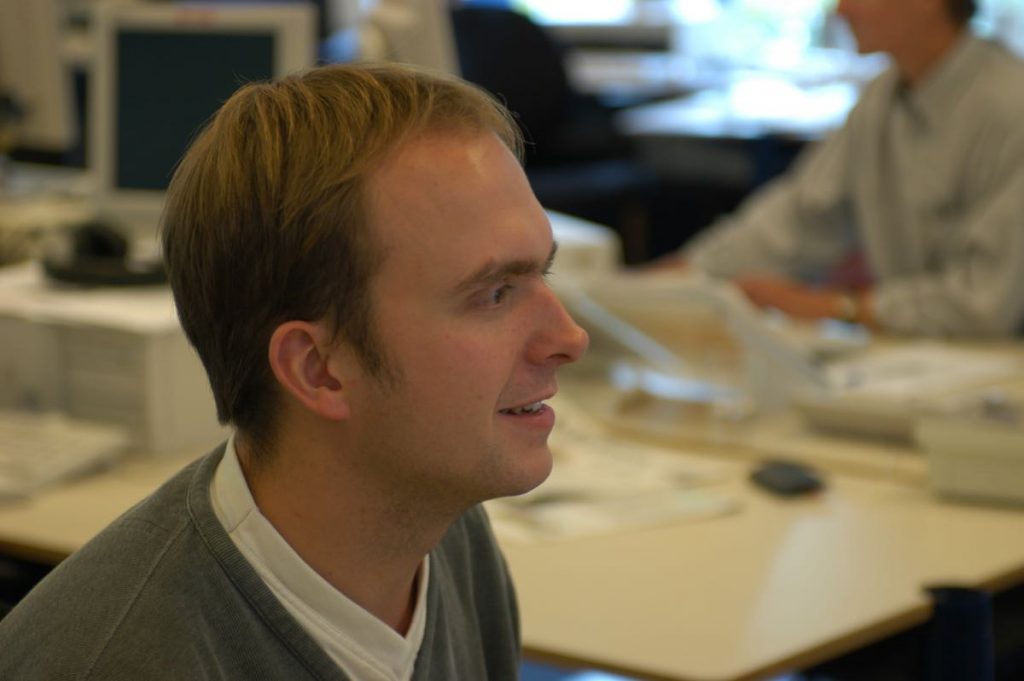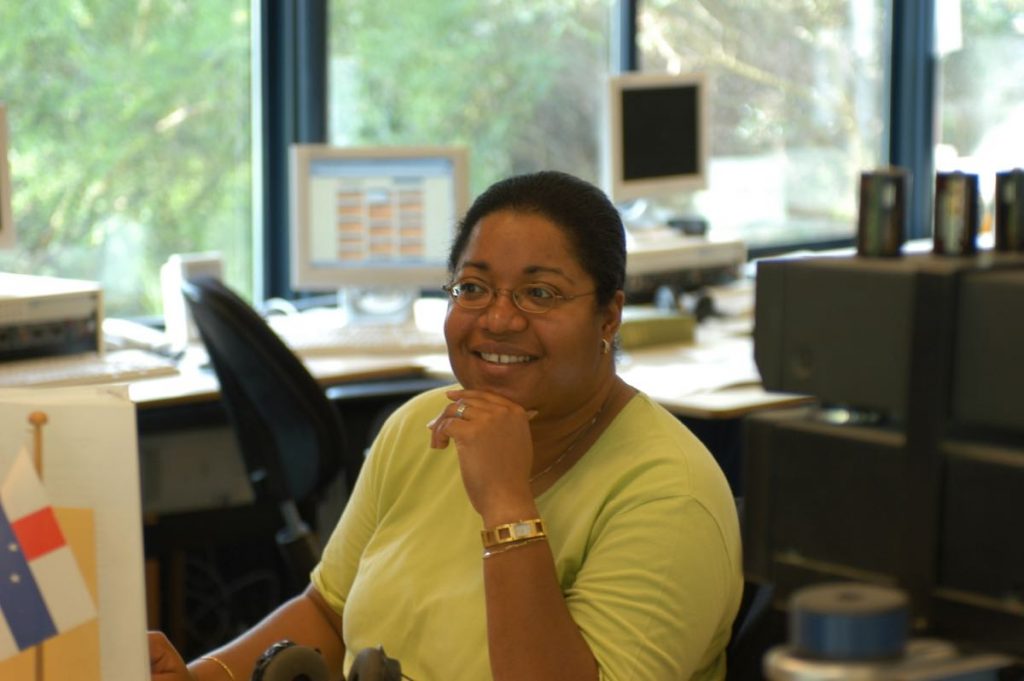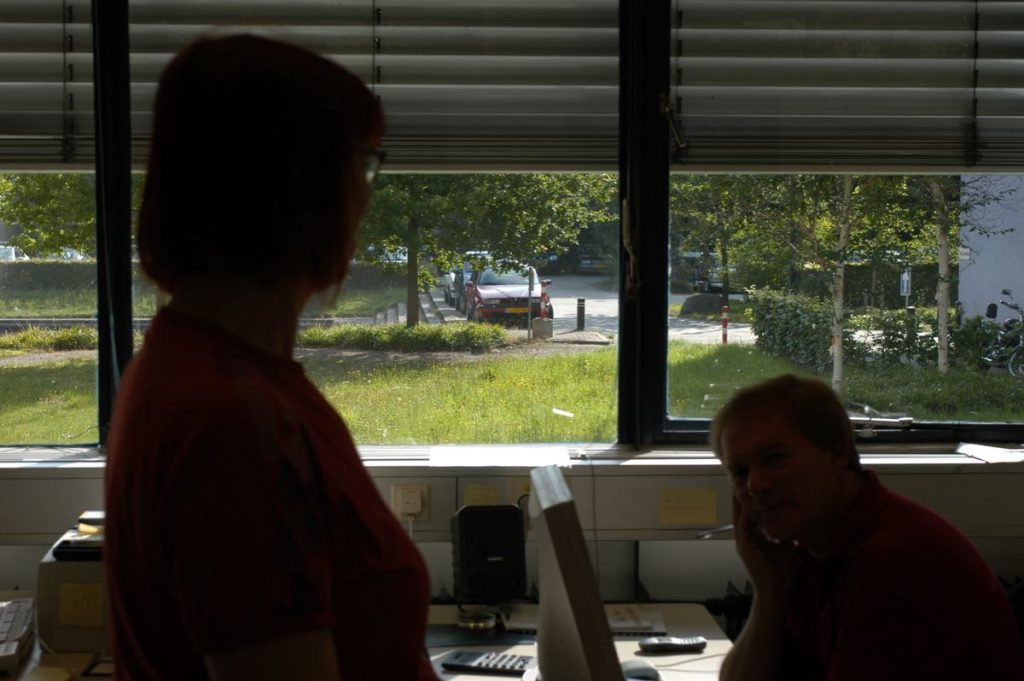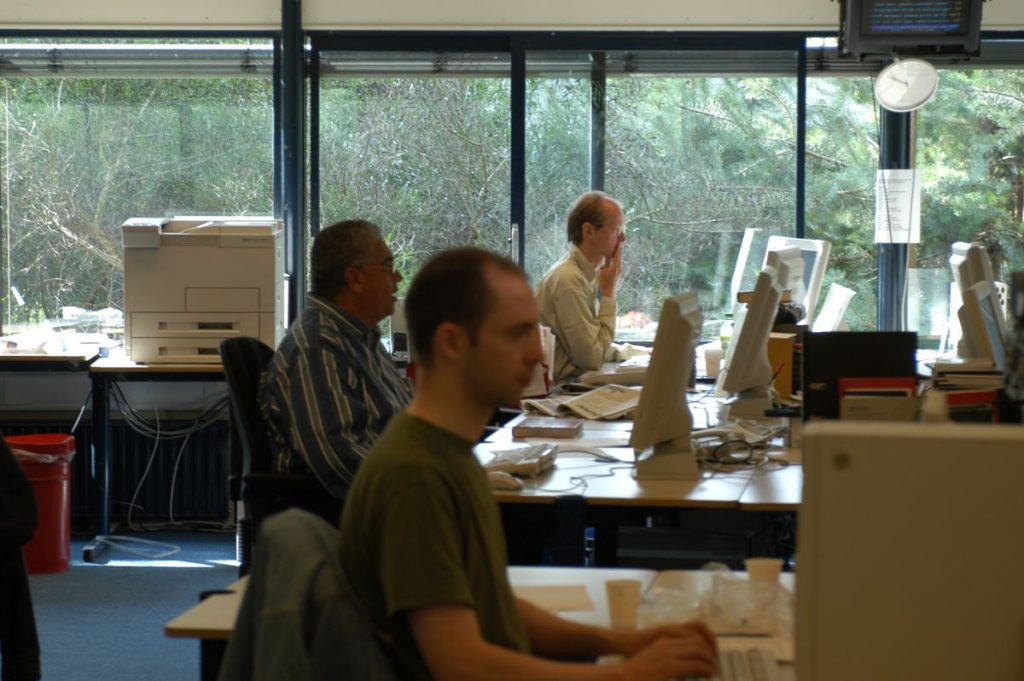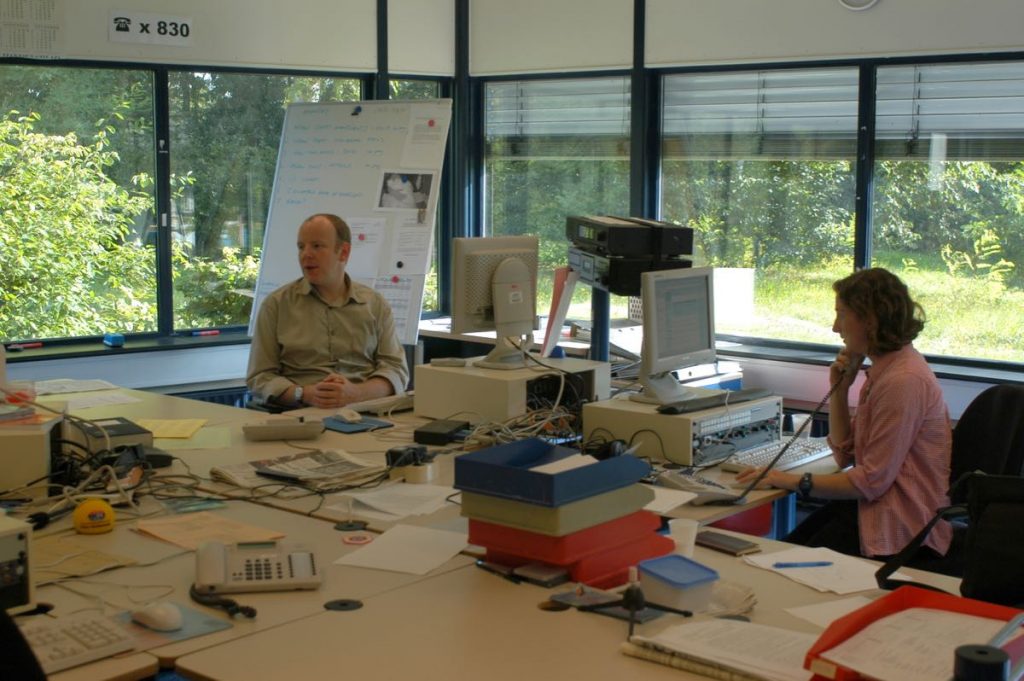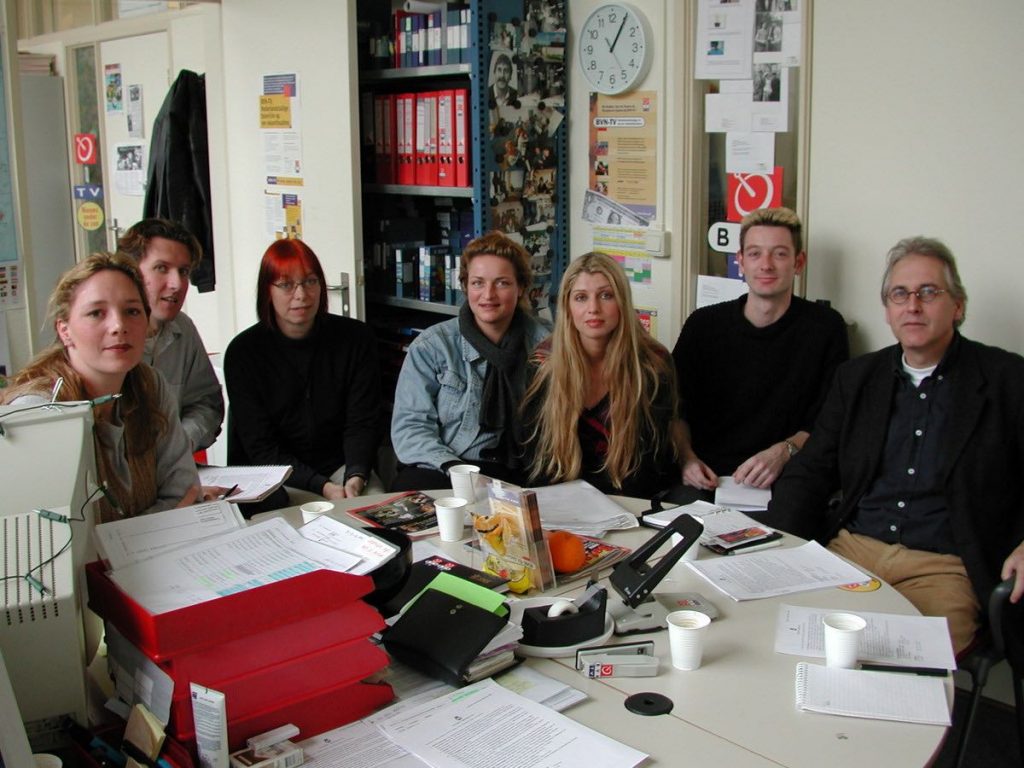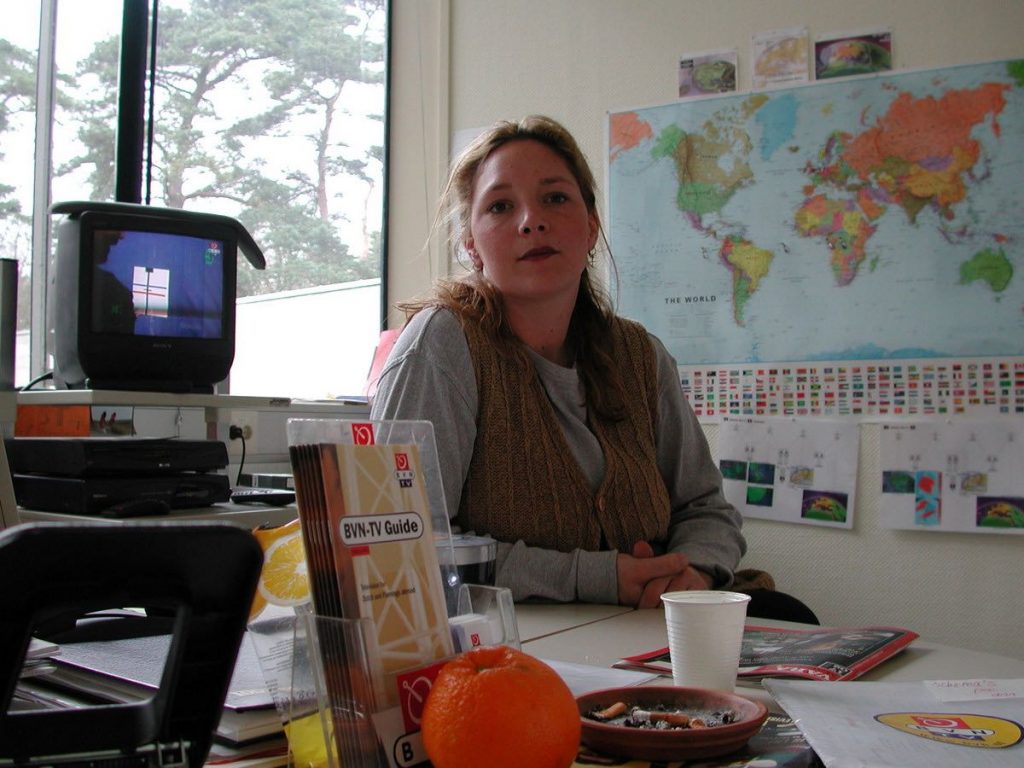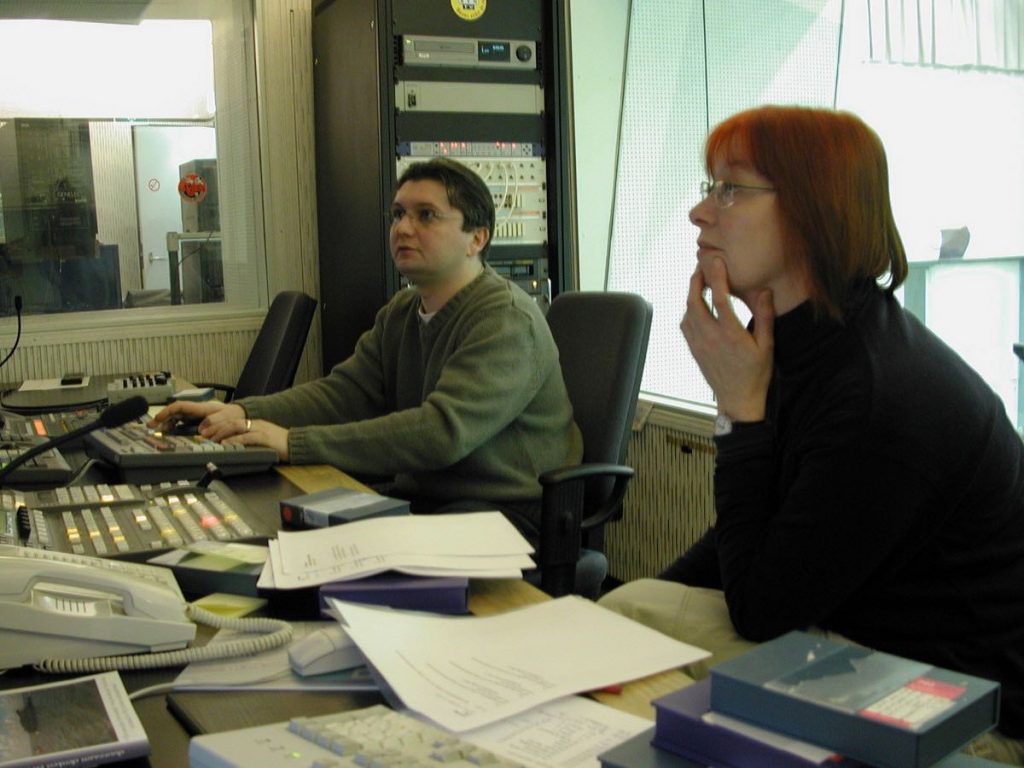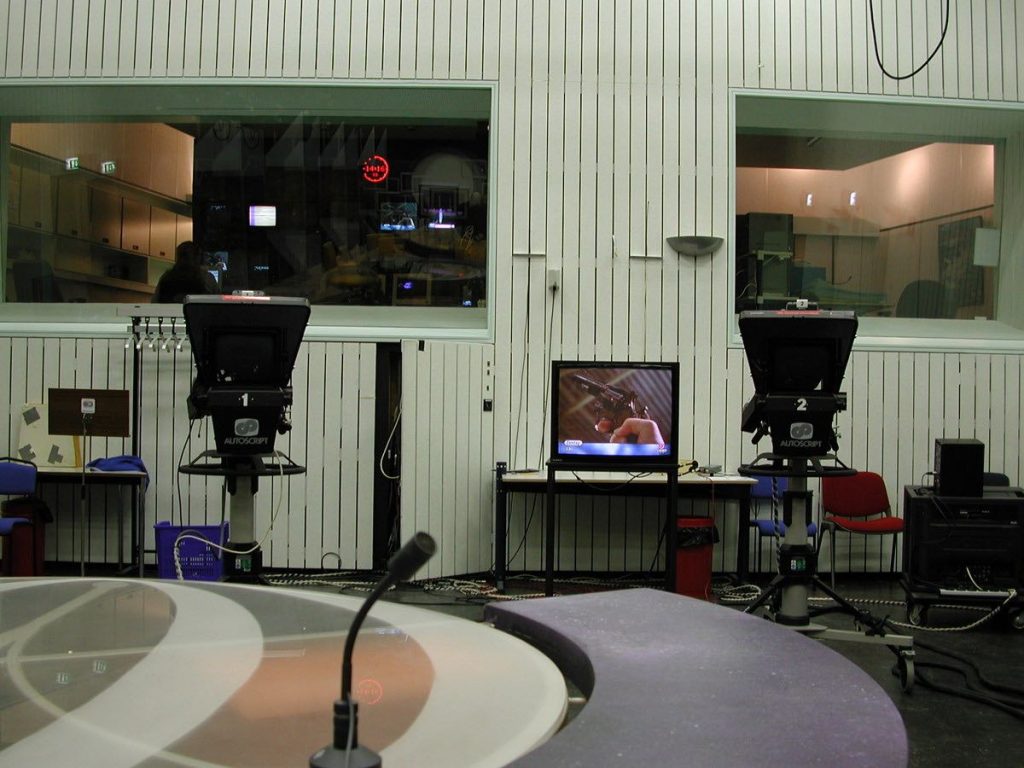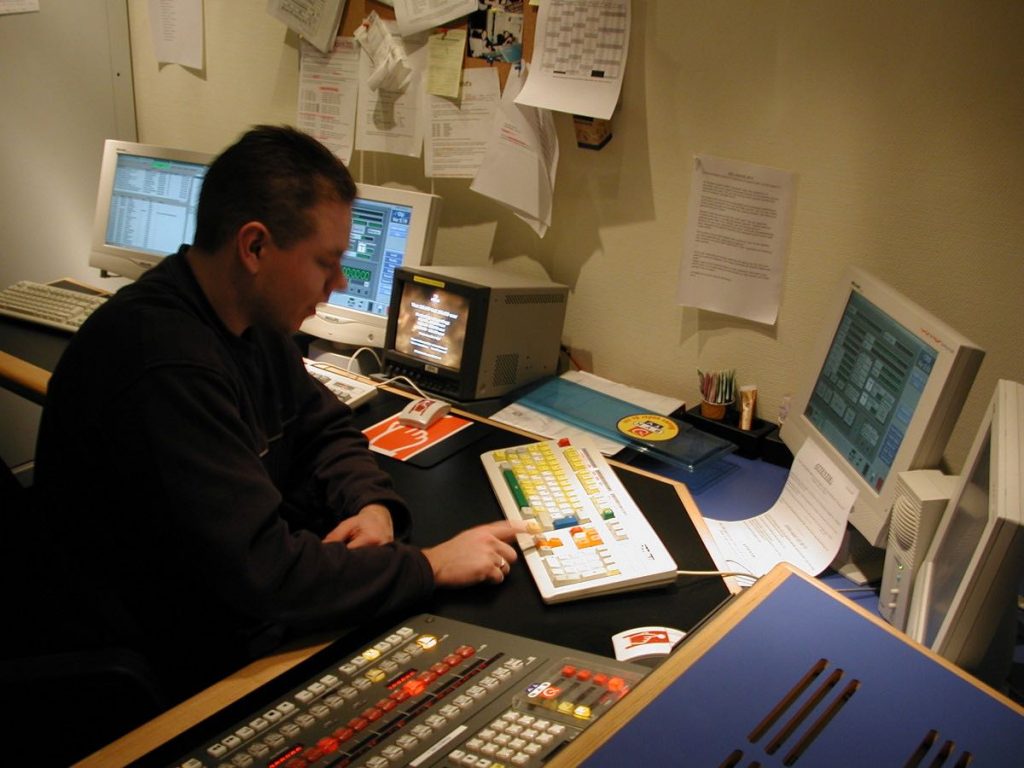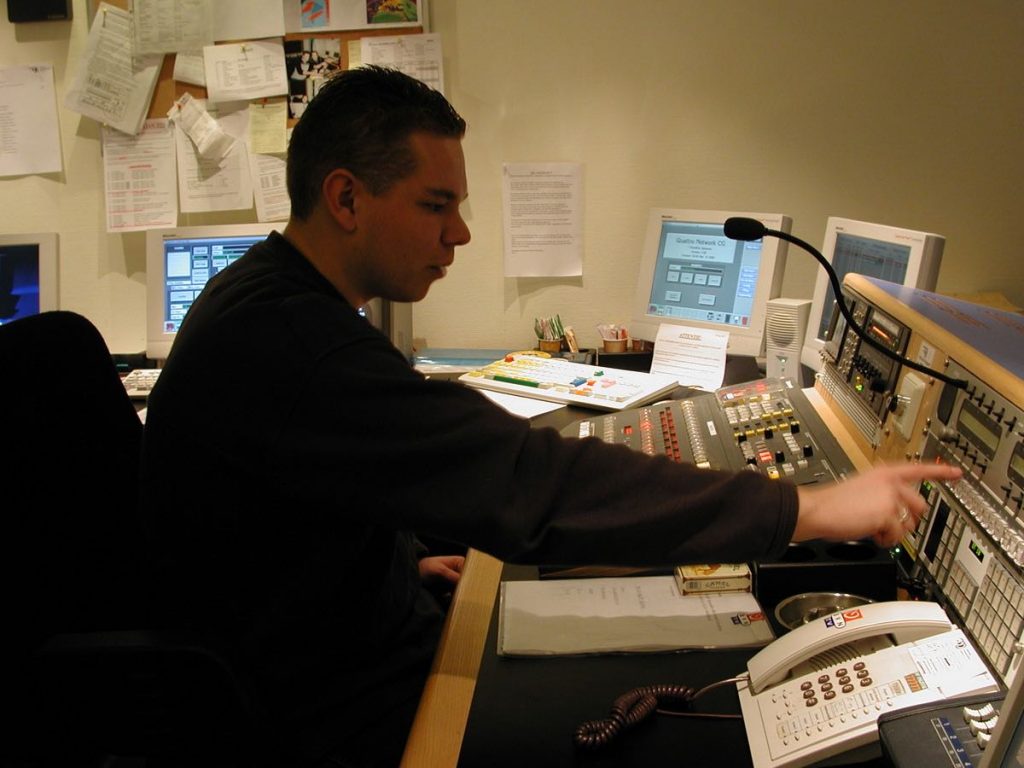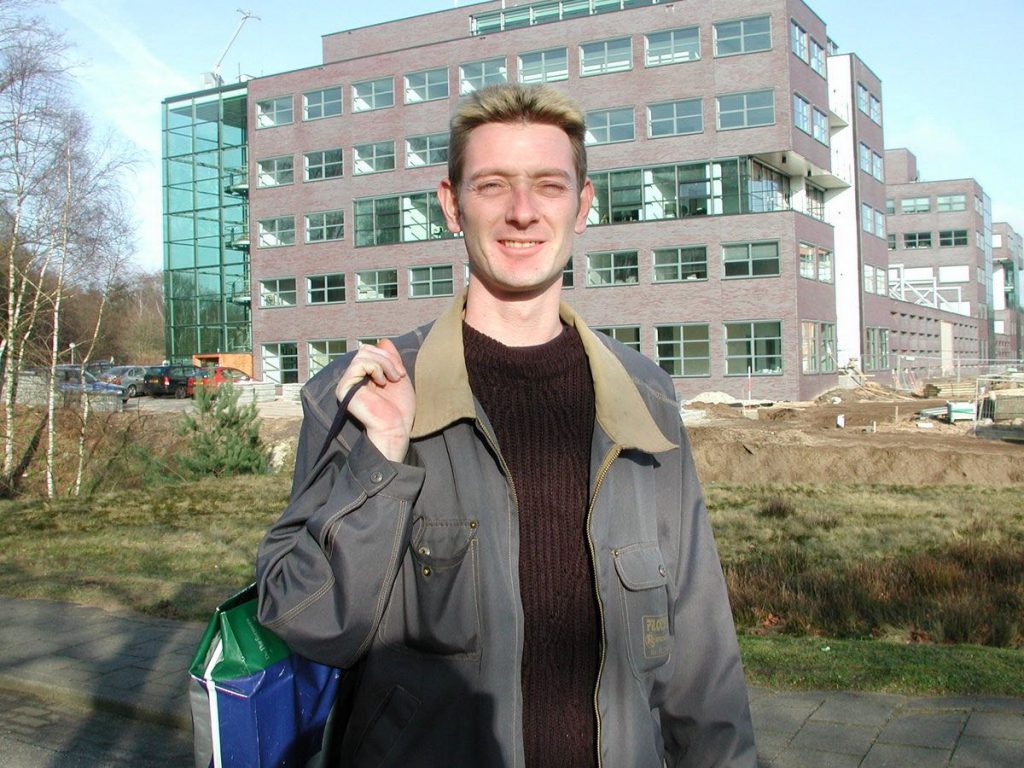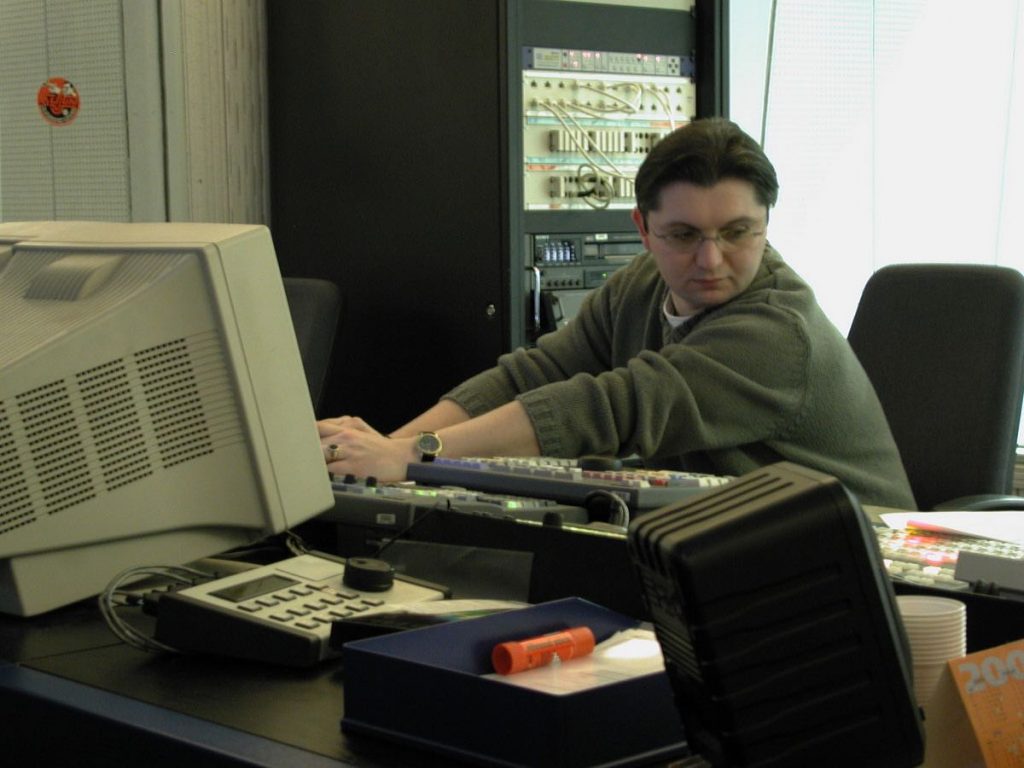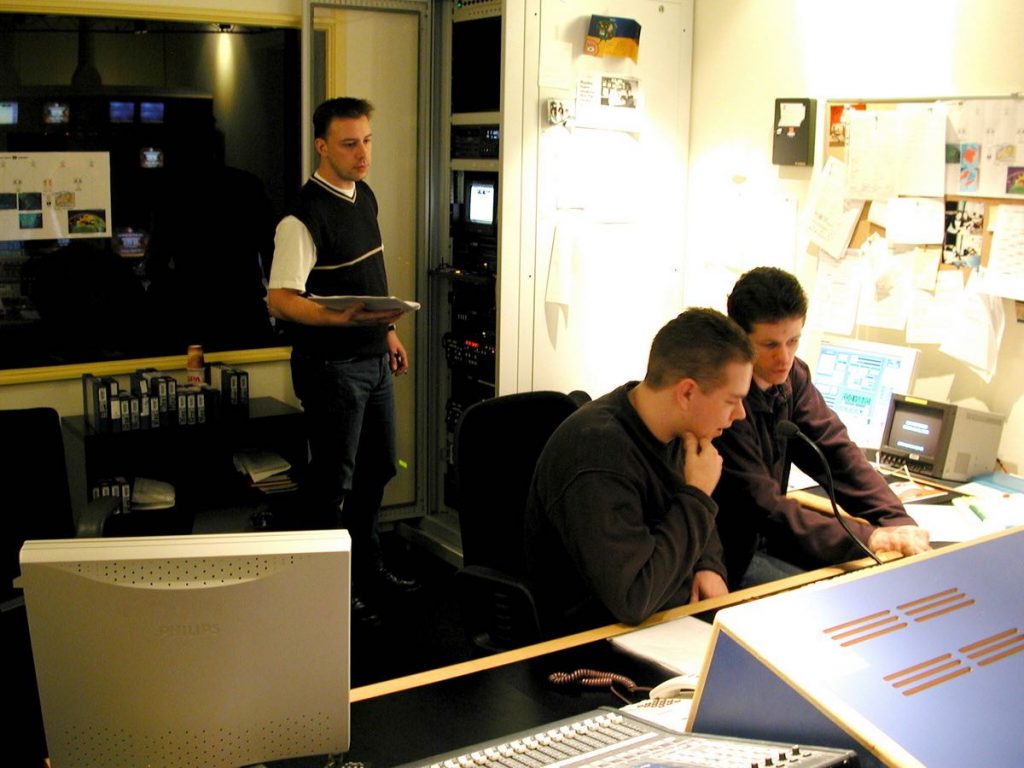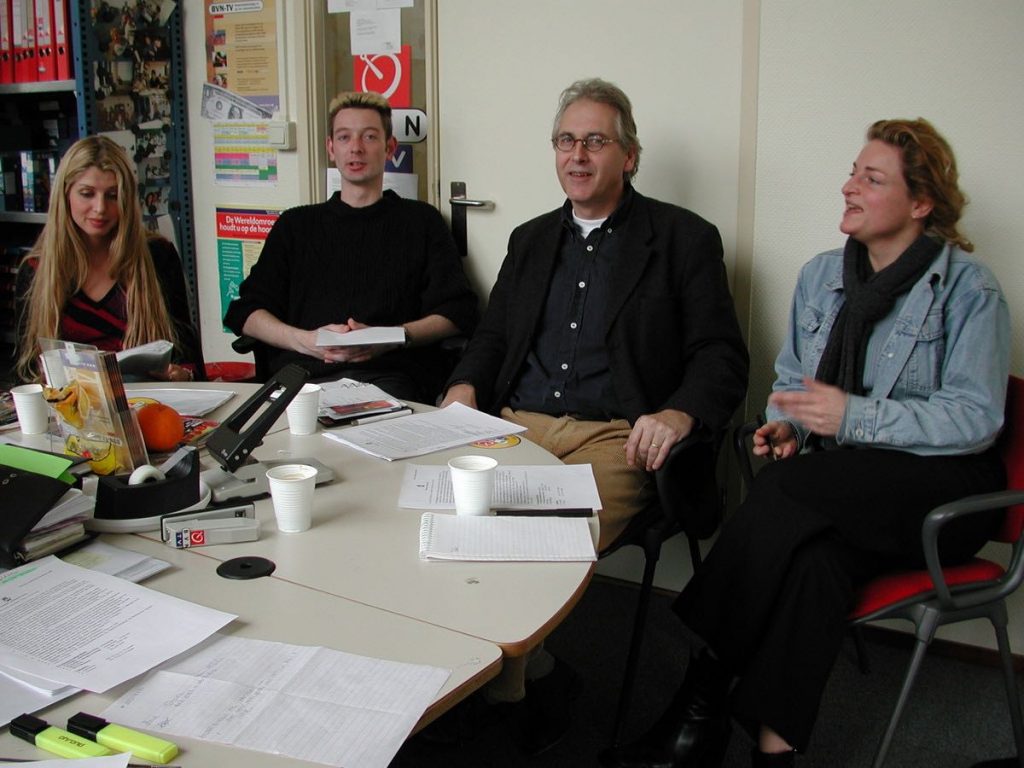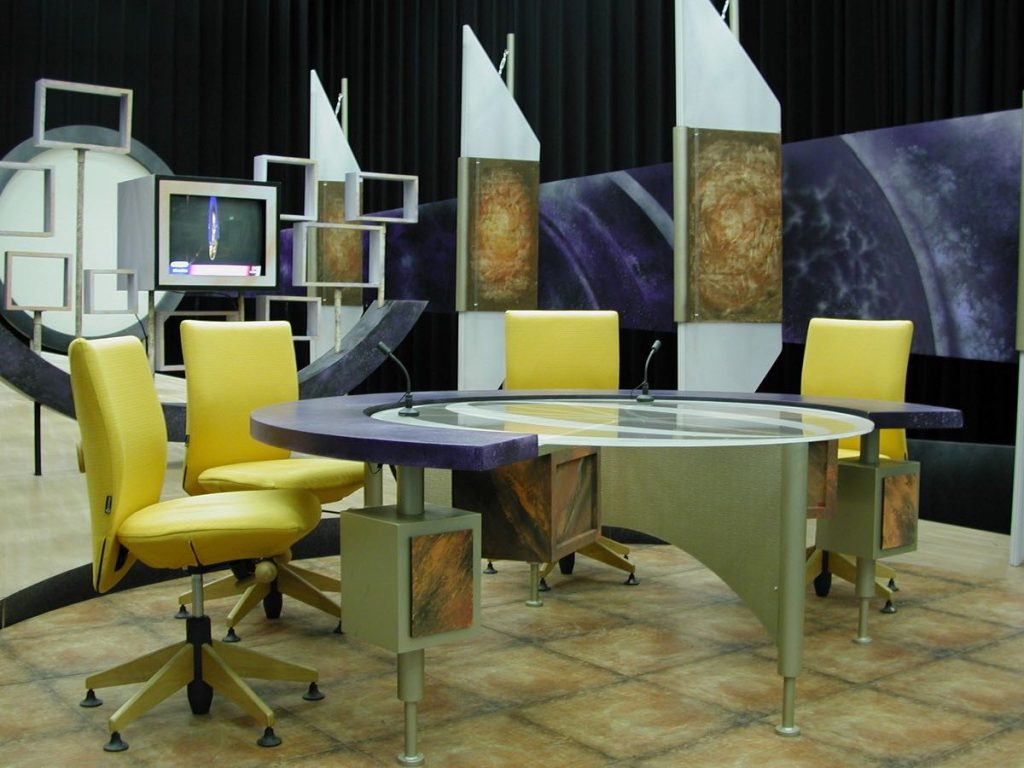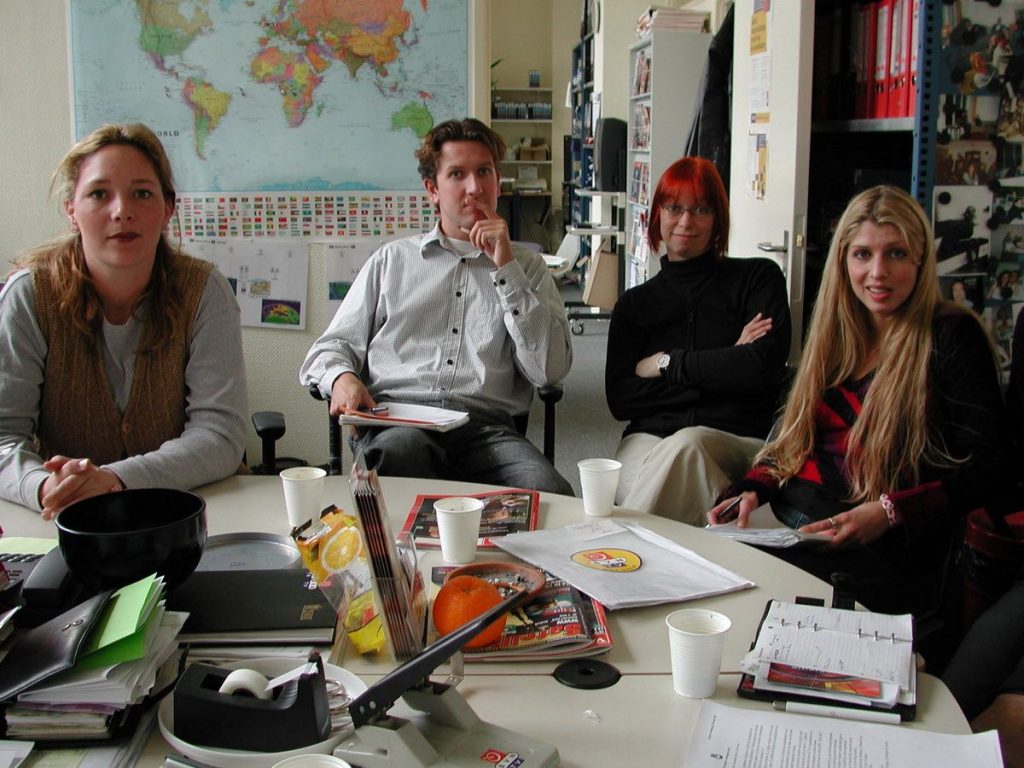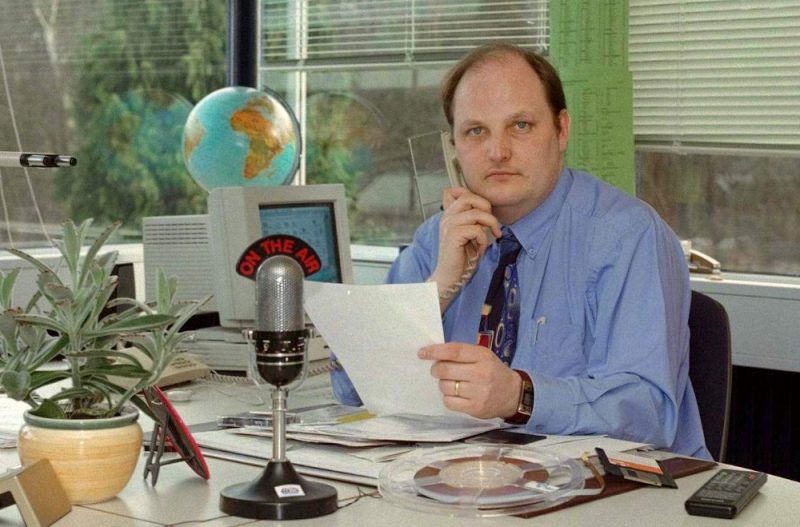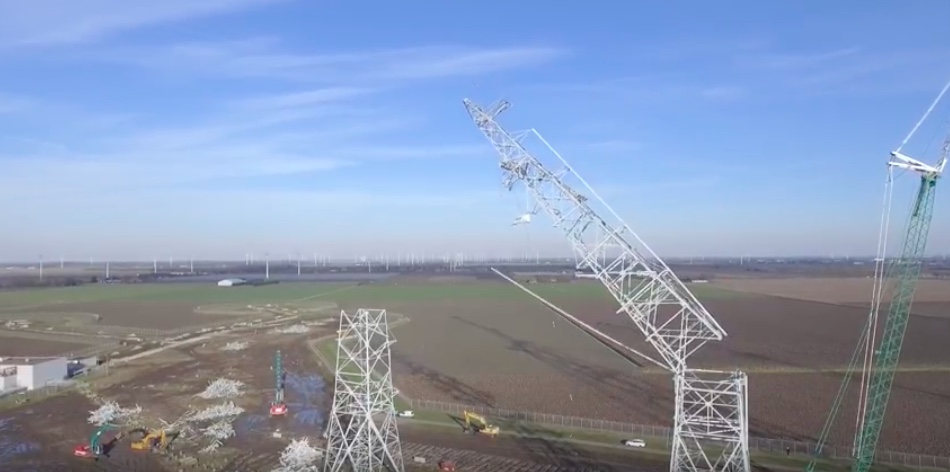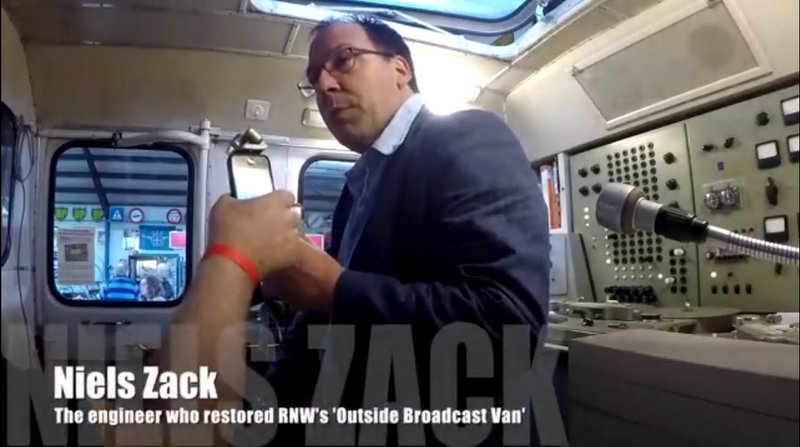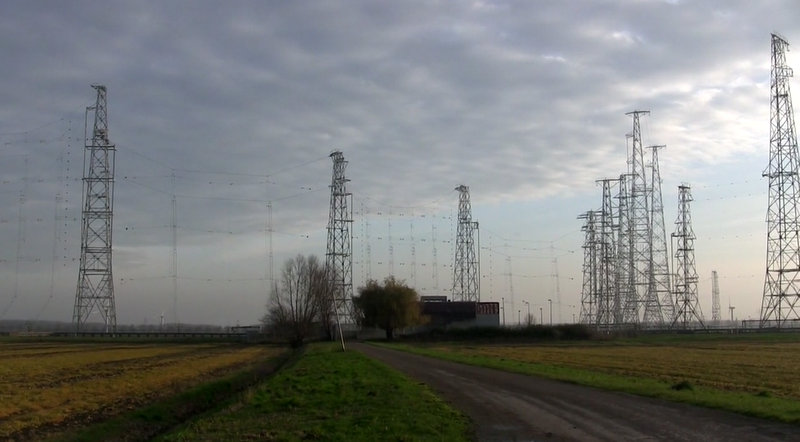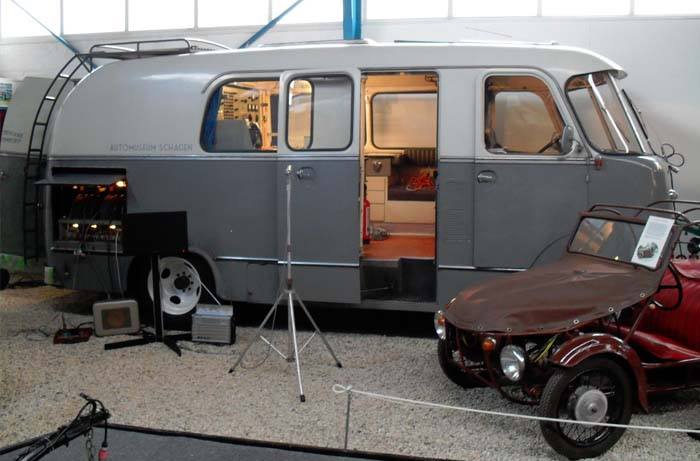Many thanks to Jonathan Marks–former host of RNW’s Media Network and curator of the Media Network Vintage Vault–who kindly shares the following videos from Radio Netherlands.
The first video is from the 1960s and promotes RNW’s move to the Witte Kruislaan building. The second video highlights the Radio Netherlands Flevo Transmitter Site and also includes a lot of “B roll” material (without audio) that Jonathan commissioned.
Check out the videos and Jonathan’s descriptions below:
The Radio Netherlands film in the 1960’s
When Radio Netherlands moved into their new building in Witte Kruislaan in 1961, they asked Pete van der Kleut to make a film to help in promotion. He shot it in a couple of days on zero budget and a few rolls of film- it was pure theatre with people in various departments doing all sort of things on cue. Everybody is incredibly busy discussing things, the head of the newsroom is correcting copy before it is broadcast, and the poor guy in the newsroom doesn’t know which phone to answer first. Women play only support roles, tidying up, typing and organizing things, The problem was that until the mid nineties this was the only footage of Radio Netherlands in the national sound archive. And when cuts came that were reported on the NOS Journaal, the same 60’s footage was often repeated – confirming the picture that RNW was stuck in the past. Again, the be fair, the sound has been changed on this version. The original over the top commentary was in Dutch.
Radio Netherlands Flevo Transmitter Site and B roll material
During my time as Programme Director at Radio Netherlands I commissioned various video clips to make sure we had current video material of the building, newsroom, continuity, and documentation. This was just raw footage done one day in July 2001 and 2002. This sequence starts with video from the Flevoland transmitter site when it was fully operational. Transmitters have since been removed and the site is silent.
Thanks so much for sharing these videos, Jonathan! As I’ve mentioned many times before, you’re doing such an amazing service to the community by curating, archiving and sharing all of this RNW media. Thank you.
Check out the Media Network Vintage Vault by clicking here.
Check out Jonathan’s colleagues at the Radio Netherlands Archives.

